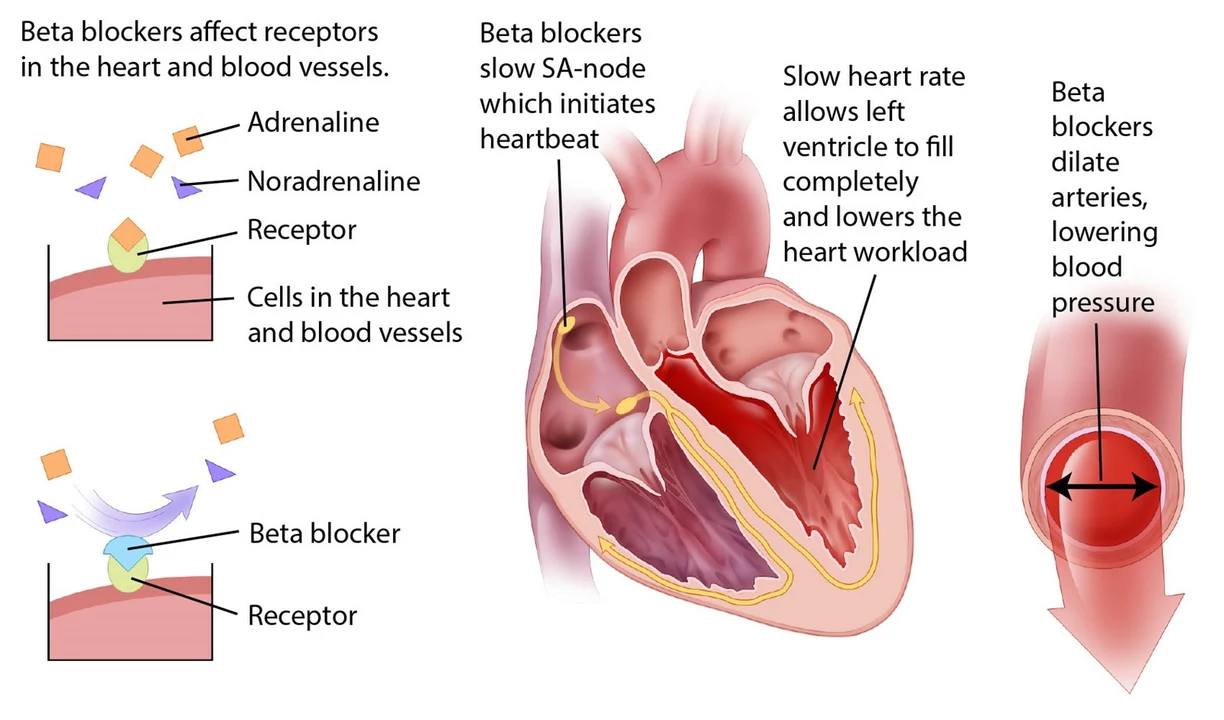Atenolol: What It Does and How to Use It
Atenolol is a beta-blocker doctors often prescribe for high blood pressure, chest pain (angina), and some heart rhythm problems. It slows the heart and lowers blood pressure, which reduces the heart’s workload. People like that it’s a once-daily, widely available generic drug, but it still needs careful handling.
How atenolol works and when it’s used
Atenolol blocks beta-1 receptors in the heart. That means your heart beats slower and with less force, which lowers blood pressure and eases chest pain. Doctors commonly use it for: hypertension, stable angina, certain kinds of fast heart rhythms, and sometimes after a heart attack. It’s not the first choice for everyone—your doctor will weigh other conditions like asthma or diabetes before prescribing it.
Dosing, side effects, and safety tips
Typical adult doses range from 25 mg to 100 mg once daily. Many people start at 25–50 mg, then adjust based on blood pressure and heart rate. If you have kidney problems, your doctor may lower the dose because atenolol leaves the body through the kidneys.
Common side effects include tiredness, dizziness, cold hands or feet, and a slow heartbeat. Some people notice sleep changes, mood shifts, or decreased libido. Serious reactions are rare but can include severe bradycardia (very slow heart rate), low blood pressure, worsening heart failure, or breathing problems in people with asthma.
Don’t stop atenolol suddenly. Stopping it quickly can trigger chest pain or make heart problems worse. If you need to stop, your provider will usually reduce the dose gradually over days or weeks.
Watch for drug interactions. Combining atenolol with other heart meds like verapamil or diltiazem can cause dangerously slow heart rate. It can amplify blood sugar swings and mask typical low-sugar symptoms in people who use insulin. NSAIDs (like ibuprofen) can blunt its blood-pressure-lowering effect. Always tell your prescriber about all meds and supplements you take.
Atenolol in pregnancy has been linked to lower birth weight in some studies, so doctors typically avoid it during pregnancy unless benefits clearly outweigh risks. If you’re breastfeeding, ask your provider—small amounts pass into breast milk.
Practical tips: take atenolol at the same time every day, with or without food. Check your blood pressure and pulse regularly, and note if your resting pulse is under 50 bpm, or if you feel dizzy, very short of breath, or faint—call your doctor. Avoid driving or operating machinery until you know how it affects you.
When to get emergency help: sudden chest pain, fainting, severe shortness of breath, or signs of an allergic reaction (swelling, hives, trouble breathing). For routine questions—dosing changes, side effects, or adding other meds—contact your prescriber or pharmacist first.
Need more details or a quick comparison with other beta-blockers? Check with your healthcare team. They can match the medicine to your exact health needs and monitor you safely.
Atenolol and Heart Health Myths: Debunking Misconceptions
In my latest blog post, I tackled the common misconceptions surrounding Atenolol and heart health. I found out that Atenolol, a beta-blocker medication, is often misunderstood in terms of its effectiveness and side effects. Through thorough research, I debunked several myths, such as the belief that Atenolol is dangerous for people with asthma or that it's not a suitable treatment for high blood pressure. By providing accurate information, I hope to help my readers make informed decisions about their heart health and understand the true role of Atenolol in managing cardiovascular conditions. Stay tuned for more myth-busting posts on various health topics!
View MoreAtenolol vs. other beta-blockers: What sets it apart?
As a blogger, I've been researching the differences between Atenolol and other beta-blockers. What sets Atenolol apart is its selectivity for beta-1 receptors, which mainly affects the heart rather than other areas of the body. This makes it less likely to cause side effects like bronchoconstriction, which can be a problem with non-selective beta-blockers. Additionally, Atenolol has a longer half-life, meaning it can be taken once a day for better patient compliance. Overall, Atenolol appears to be a more targeted option with fewer side effects compared to other beta-blockers on the market.
View More

